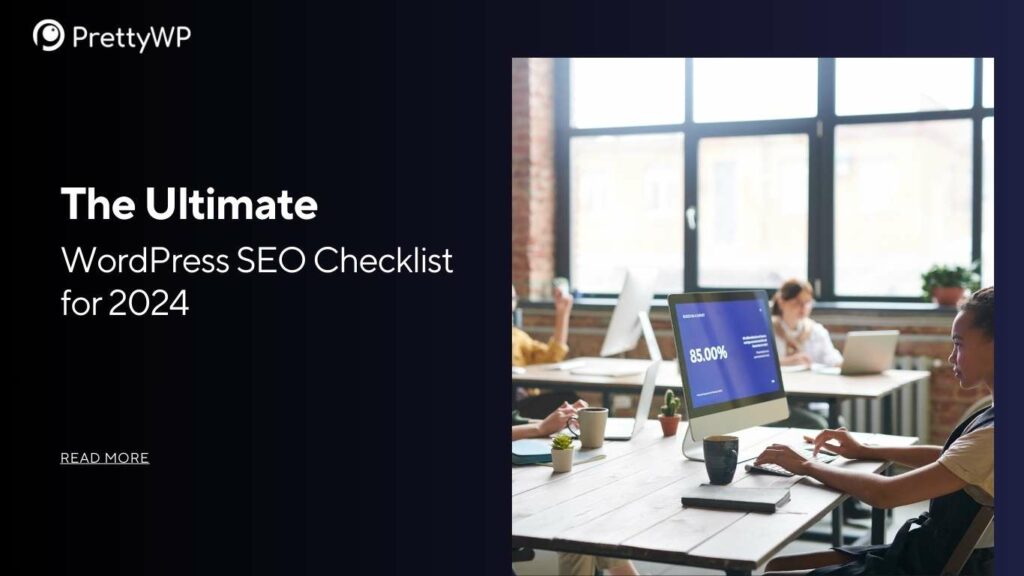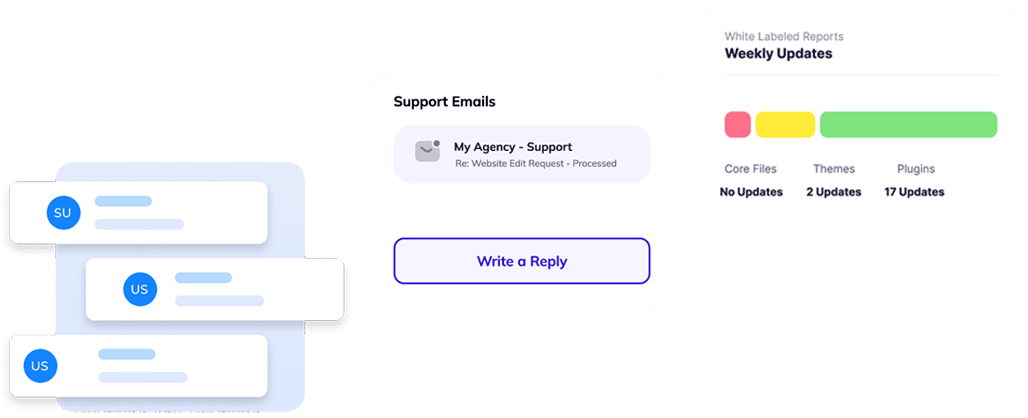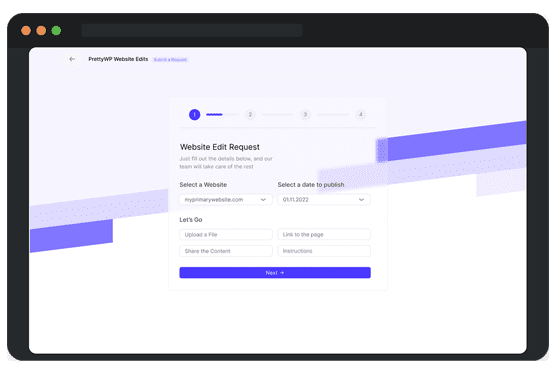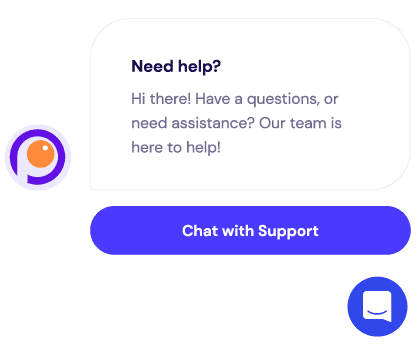Whether you’re a pro or just starting your WordPress journey, this guide is written to provide you with cutting-edge insights and practical steps to improve your website’s visibility and performance. A well-optimized website can make a significant difference in driving traffic, engaging visitors, and ultimately, achieving your business goals. From understanding the latest algorithms and trends to implementing technical and on-page SEO best practices, there’s a lot to cover.
These days, new challenges and opportunities in SEO are emerging. Google’s ever-evolving algorithms, the rise of artificial intelligence, and increasing emphasis on user experience make it crucial to stay updated. This guide will help you understand these changes and how to adapt your SEO strategies accordingly. Moreover, we’ll include essential tools and plugins that can streamline your efforts, making SEO not just accessible but also efficient.
Our approach is simple: provide value, stay updated, and make SEO a seamless part of your website management process. By focusing on both foundational and advanced SEO tactics, this guide ensures that you’re equipped to tackle the nuances of modern SEO and achieve measurable results.
Understanding WordPress SEO in 2024
As we step into 2024, WordPress SEO continues to be an intricate blend of art and science. At its core, Search Engine Optimization (SEO) involves strategies and practices designed to enhance your website’s visibility on search engine results pages (SERPs). Given that WordPress powers over 40% of the web, it is imperative for website owners to stay updated with the latest SEO trends and best practices to maintain a competitive edge.
The Evolution of SEO
SEO has evolved significantly over the years. Gone are the days when keyword stuffing and backlink farming could easily boost your site’s ranking. Modern SEO is more user-centric, focusing on providing valuable content that meets the needs and expectations of your audience. Search engines like Google are continually refining their algorithms to better understand and rank web pages, rewarding those that offer a superior user experience.
The Role of Content in SEO
High-quality, relevant content remains the cornerstone of effective SEO. In 2024, content must be informative, engaging, and tailored to your target audience’s preferences. This means diving deep into keyword research to understand what your audience is searching for and crafting content that answers their questions comprehensively. Additionally, the rise of voice search means that content should be conversational and natural, reflecting how people speak rather than type.
Technical SEO in WordPress
Technical SEO forms the backbone of your website’s optimization efforts. This includes aspects such as site speed, mobile-friendliness, and secure HTTPS connections. WordPress offers numerous plugins and tools to help with technical SEO. For instance, the Yoast SEO plugin can help you optimize your content and meta tags, while plugins like WP Rocket can improve site speed. Ensuring your website is mobile-responsive is also crucial, as more users access the web via mobile devices than ever before.
Local SEO and E-commerce
For businesses with a physical presence, local SEO is indispensable. This involves optimizing your WordPress site to attract local traffic and improve visibility in local search results. Key tactics include ensuring your business is listed on Google My Business, optimizing for local keywords, and encouraging customer reviews.
For e-commerce websites built on WordPress, SEO involves additional layers of complexity. Product descriptions, reviews, and schema markup are essential for improving product visibility in search results. Plugins like WooCommerce SEO can provide the necessary tools to tailor your SEO efforts specifically to e-commerce.
SEO Trends to Watch in 2024
Stay ahead of the curve by keeping an eye on emerging trends. Artificial Intelligence (AI) and machine learning continue to influence SEO, making it more personalized and predictive. Voice search is also gaining traction, necessitating a shift towards more conversational content. Additionally, the importance of video content cannot be overstated, as it is increasingly preferred by users and favored by search algorithms.
Latest Trends and Best Practices
- Core Web Vitals: Google’s emphasis on user experience means Core Web Vitals are more critical than ever. Ensure your site meets benchmarks for loading, interactivity, and visual stability.
- AI and Machine Learning: Leverage AI tools for keyword research, content optimization, and user intent analysis.
- Voice Search Optimization: With the rise of voice-activated devices, optimize content for voice search by using conversational keywords and natural language.
Technical SEO in WordPress
Technical SEO forms the backbone of your website’s optimization efforts. This includes aspects such as site speed, mobile-friendliness, and secure HTTPS connections. WordPress offers numerous plugins and tools to help with technical SEO. For instance, the Yoast SEO plugin can help you optimize your content and meta tags, while plugins like WP Rocket can improve site speed. Ensuring your website is mobile-responsive is also crucial, as more users access the web via mobile devices than ever before.
Comprehensive Technical SEO Checklist
- Ensure HTTPS: Secure your website with an SSL certificate. HTTPS is a ranking factor and crucial for user trust.
- Improve Site Speed: Use tools like Google PageSpeed Insights to identify and fix speed issues. Optimize images, leverage browser caching, and use a Content Delivery Network (CDN).
- Mobile-Friendly Design: Implement a responsive design that adapts to all screen sizes. Use Google’s Mobile-Friendly Test to ensure compliance.
- XML Sitemaps: Generate and submit an XML sitemap to search engines. Plugins like Yoast SEO can automate this process.
- Robots.txt File: Optimize your robots.txt file to ensure search engines can crawl your site efficiently.
On-Page SEO
On Page SEO is crucial for improving your website’s search engine visibility and enhancing the user experience. Unlike off-page SEO, which involves external factors like backlinks, on-page SEO focuses on optimizing individual web pages to rank higher and earn more relevant traffic in search engines. Here are some key aspects of on-page SEO that every site owner should prioritize:
1. Title Tags
Title tags are one of the most important elements of on-page SEO. They appear as the clickable headline on search engine results pages and should be crafted to be both descriptive and engaging. Make sure your title tags accurately reflect the content of the page, include relevant keywords, and ideally, stay within the 60-character limit to ensure the entire title is visible in search results.
2. Meta Descriptions
Meta descriptions provide a summary of the page content and appear below the title tag in search results. While they do not directly impact rankings, a well-written meta description can improve click-through rates. Aim to create compelling and concise meta descriptions that include target keywords and provide a clear overview of what users can expect from the page.
3. Headings and Subheadings
Using headings (H1, H2, H3, etc.) not only helps organize your content but also makes it more accessible for readers and search engines. The H1 tag should contain the primary keyword and provide a clear indication of the page’s topic. Subheadings (H2, H3, etc.) should be used to break down the content into sections, making it easier to read and understand.
4. Content Quality and Keyword Research
High-quality content is the foundation of on-page SEO. Content should be unique, valuable, and relevant to your audience. It should address the needs and questions of your visitors, keeping them engaged and encouraging them to spend more time on your site. Comprehensive keyword research can guide you in selecting topics, but always focus on creating content that delivers value rather than simply stuffing keywords. Use tools like Ahrefs, SEMrush, and Google Keyword Planner to find relevant keywords. Target primary and secondary keywords naturally in your content.
5. Internal Linking
Internal linking improves navigation and helps distribute page authority across your site. By linking relevant articles and pages, you can guide visitors to additional content and improve indexation by search engines. Make sure your internal links use descriptive anchor text and connect to pages that add value for the reader.
6. URL Structure
SEO-friendly URLs are clean, descriptive, and include keywords. Avoid using long, complex URLs with unnecessary parameters and numbers. A good URL structure helps search engines understand the content of your pages and improves the user experience.
7. Image Optimization
Images enhance the visual appeal of your content but need to be optimized for SEO. Use descriptive file names and alt text that include relevant keywords. Compress images to reduce file size and improve page load times. Properly optimized images can contribute to better rankings and provide additional opportunities to appear in image search results.
8. Mobile-Friendliness
With the majority of users accessing the web via mobile devices, having a mobile-friendly website is non-negotiable. Ensure your WordPress theme is responsive, meaning it adjusts seamlessly to different screen sizes. Google’s mobile-first indexing means the mobile version of your site is considered the primary version, so optimizing for mobile is crucial for SEO.
9. Site Speed
Page load speed is a critical factor for both user experience and SEO. Slow-loading pages can lead to higher bounce rates and lower search rankings. Utilize tools like Google PageSpeed Insights to identify areas for improvement. Optimize images, leverage browser caching, and consider using a Content Delivery Network (CDN) to enhance your site’s performance.
10. Secure HTTPS
Security is a key aspect of on-page SEO. Switching from HTTP to HTTPS encrypts the data exchanged between the user and your website, offering better security. Google has confirmed that HTTPS is a ranking signal, and browsers like Chrome flag websites that are not secure, which can deter visitors.
Off-Page SEO Strategies
Off-page SEO strategies are essential for building your website’s authority and increasing its visibility beyond on-page efforts. These strategies focus on activities conducted outside your website to improve search engine rankings and drive high-quality traffic. Below are some critical off-page SEO strategies that every site owner should consider:
1. Link Building
Link building remains a cornerstone of off-page SEO. Acquiring high-quality backlinks from reputable websites is crucial as it signals to search engines that your content is valuable and authoritative. Prioritize obtaining backlinks from relevant, high-authority sites within your industry. Techniques like guest blogging, broken link building, and creating shareable infographics can effectively garner authoritative backlinks.
2. Social Media Engagement
Social media platforms are powerful tools for off-page SEO. Increased social media engagement can drive more traffic to your site, enhancing your online presence. Share your content across various social media channels and engage with your audience through comments, shares, and likes. Building a strong social media presence helps humanize your brand, encourages user interaction, and can indirectly improve your search rankings.
3. Influencer Marketing
Collaborating with influencers in your industry can amplify your reach and credibility. Influencers have large, loyal followings, and their endorsement of your content or product can lead to increased traffic and brand awareness. Choose influencers whose audience aligns with your target market and engage them in promoting your content through reviews, social media posts, or sponsored content.
4. Content Marketing
Producing high-quality, shareable content is another vital aspect of off-page SEO. Publish content that addresses the pain points of your audience, offers solutions, and provides value. Content formats such as blog posts, videos, podcasts, or whitepapers can be effective. Ensure your content is easily shareable to encourage backlinks and social media shares, which can improve your site’s authority and visibility.
5. Forum Participation
Active participation in forums and online communities relevant to your industry can also boost your off-page SEO. Platforms like Reddit, Quora, or niche-specific forums are places where your target audience may congregate. Provide valuable insights, answer questions, and occasionally link back to your content when it’s genuinely helpful to the discussion. This not only builds your reputation but can also generate traffic to your site.
6. Local SEO and Listings
For businesses targeting a local audience, local SEO is critical. Ensure your business is listed in local directories such as Google My Business, Yelp, and Bing Places for Business. These listings should be fully optimized with accurate and consistent information, including your business name, address, phone number, and website. Positive reviews on these platforms can increase your credibility and visibility in local search results.
7. Online Reviews
Encouraging satisfied customers to leave positive reviews on platforms like Google, Yelp, and industry-specific review sites can significantly impact your off-page SEO. Reviews not only influence potential customers but also play a role in local search rankings. Responding to reviews—both positive and negative—demonstrates your engagement and commitment to customer satisfaction.
8. Influential Blogging and Guest Posts
Publishing guest posts on reputable blogs in your industry can enhance your domain authority and reach a broader audience. When writing guest posts, ensure that they are high-quality and offer valuable insights. Include relevant backlinks to your site, but avoid overstuffing. Building relationships with influential bloggers can also lead to further opportunities for collaboration and backlink acquisition.
By strategically implementing these off-page SEO strategies, you can enhance your website’s authority, drive more organic traffic, and improve its overall search engine performance. Off-page SEO is an ongoing effort that complements your on-page tactics, ensuring a holistic approach to optimizing your visibility and credibility in 2024 and beyond.
WordPress Plugins for SEO
Leveraging the power of WordPress plugins can significantly simplify and enhance your SEO efforts. These tools provide an invaluable asset for both beginners and experienced users, offering functionalities that range from keyword optimization to technical SEO improvements. Here are some of the most popular and advanced WordPress plugins for SEO that can help you achieve your goals:
1. Yoast SEO
Yoast SEO is arguably the most popular SEO plugin for WordPress. It offers a comprehensive suite of tools designed to optimize your site for search engines. Key features include on-page SEO analysis, XML sitemap generation, meta tag management, and readability analysis. Yoast SEO also provides actionable insights to improve your content’s SEO score, making it a user-friendly choice for optimizing blog posts and pages.
2. All in One SEO Pack
All in One SEO Pack is another widely-used plugin that offers robust SEO capabilities. It includes features like XML sitemap support, Google Analytics integration, and advanced canonical URLs. The plugin is especially effective for e-commerce sites, with built-in support for SEO on WooCommerce products. All in One SEO Pack has a modular approach, allowing you to activate only the features you need.
3. Rank Math
Rank Math is quickly gaining traction for its feature-rich offerings. This plugin combines the functionalities of multiple SEO tools into one unified package. Key features include keyword rank tracking, 404 error monitoring, and internal link suggestions. Rank Math’s user interface is highly intuitive, and it offers a setup wizard that makes configuring basic SEO settings a breeze.
4. SEOPress
SEOPress is a powerful yet easy-to-use plugin that covers all your SEO needs. It includes features such as content analysis, meta descriptions, sitemaps, and breadcrumb navigation. SEOPress also supports schema markup, which is crucial for enhancing your site’s search engine visibility. The plugin is fully integrated with WooCommerce, making it a suitable choice for online stores.
5. The SEO Framework
The SEO Framework is known for its lightweight nature and fast performance. It automatically optimizes your site by generating crucial meta tags and offering flexible social media settings. The plugin focuses on essential SEO features and provides a clean, ad-free experience. Its AI-generated recommendations ensure that you follow best practices without much manual intervention.
6. Broken Link Checker
Broken links can negatively impact your site’s SEO and user experience. The Broken Link Checker plugin scans your WordPress site for broken links and missing images, making it easy to fix these issues. The plugin is highly customizable, allowing you to edit links directly from the plugin’s dashboard and receive email notifications for detected issues.
7. WP Rocket
While primarily a caching plugin, WP Rocket also contributes significantly to SEO by improving site speed and performance. Faster websites provide a better user experience and have lower bounce rates, both of which are favored by search engines. WP Rocket offers features such as page caching, lazy loading, and database optimization to help your site run smoothly.
Using these WordPress plugins, you can streamline your SEO workflow, enhance your site’s performance, and improve your search engine rankings.
Measuring and Tracking SEO Success
Key Performance Indicators (KPIs) and Metrics
To effectively measure and track SEO success, it is crucial to identify and monitor key performance indicators (KPIs) and metrics that align with your SEO goals. These insights will offer a comprehensive understanding of your website’s performance and help in making data-driven decisions.
- Organic Traffic: This metric indicates the number of visitors coming to your site through organic search results. Use tools like Google Analytics to track organic traffic and identify which pages attract the most visitors.
- Keyword Rankings: Monitoring your keyword rankings helps you understand where your site stands in search engine results. Tools like SEMrush and Ahrefs can provide detailed reports on the performance of your targeted keywords.
- Bounce Rate: A high bounce rate may indicate that your site’s content is not engaging or relevant to visitors. Lowering your bounce rate can lead to better user experience and improved rankings.
- Click-Through Rate (CTR): The percentage of users who click on your site link from search engine results. An improved CTR often results from optimizing title tags and meta descriptions to be more appealing and relevant.
- Conversion Rate: Tracking the number of conversions (sign-ups, purchases, etc.) from organic traffic helps gauge the effectiveness of your SEO efforts in achieving business objectives. Utilize conversion tracking in Google Analytics to measure this KPI.
- Backlink Profile: The number and quality of backlinks to your site are crucial for SEO success. Tools like Moz and Majestic can help you analyze your backlink profile and identify opportunities for improvement.
- Page Load Time: Fast-loading pages, as measured by tools such as Google PageSpeed Insights, contribute to a better user experience and higher search engine rankings.
Setting Up Analytics Tools
- Google Analytics: Set up and configure Google Analytics to monitor traffic, user behavior, and conversions. Use custom reports and dashboards to track specific SEO KPIs.
- Google Search Console: This tool provides insights into how Google crawls and indexes your site. It also helps to identify issues such as crawl errors and provides data on keywords, impressions, and CTR.
- SEO Audit Tools: Regularly use SEO audit tools like Screaming Frog, Ahrefs Site Audit, and SEMrush Site Audit to identify and fix technical SEO issues.
Regular Reporting and Analysis
- Monthly Reports: Generate detailed monthly reports to track progress and compare metrics over time. Include visualizations like charts and graphs for easier interpretation.
- Benchmarking: Compare your SEO metrics with industry standards and competitors to understand your site’s performance relative to others in your niche.
- Continuous Improvement: Use the data collected to make informed SEO decisions. Regularly update your strategy based on what’s working and areas needing improvement.
By implementing these tools into your SEO strategy, you can maintain a clear understanding of your keyword rankings and make data-driven decisions to enhance your site’s visibility and performance in search engine results.
Final Thoughts
Enhancing your WordPress site’s SEO in 2024 requires a comprehensive strategy that integrates various aspects of optimization. From meticulous technical configurations to dynamic on-page and off-page tactics, each component plays a crucial role in enhancing your site’s online presence. By following this ultimate checklist, you are not merely making incremental improvements but establishing a solid foundation for sustained growth and success in the digital landscape.
Keep in mind that SEO is dynamic and ever-evolving. Regularly revisit and refine your strategies to remain ahead of the curve. Stay current with the latest Google algorithm updates, experiment with new SEO techniques, and utilize analytics to make informed, data-driven decisions. Continuous learning and adaptation are essential.
Ultimately, your objective is not just to rank higher in search results but to offer genuine value to your audience. High-quality, engaging content that meets your audience’s needs will always be at the core of effective SEO. By prioritizing user experience and maintaining a strong, authoritative online presence, you will not only drive traffic but also build trust and loyalty among your visitors.













